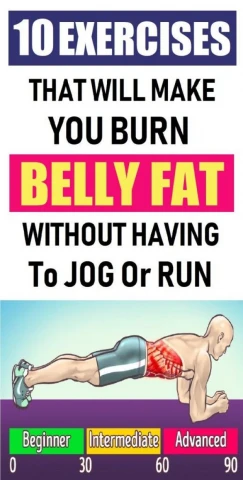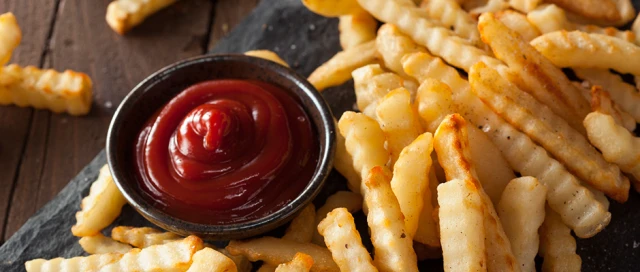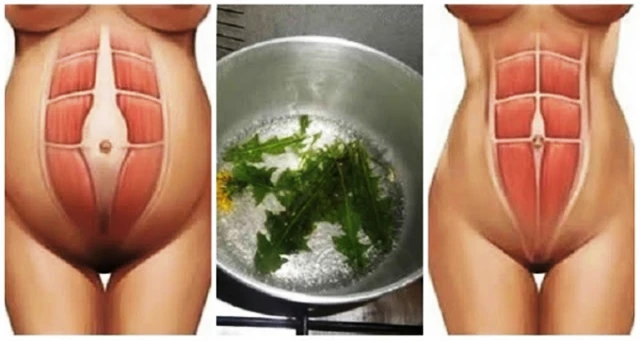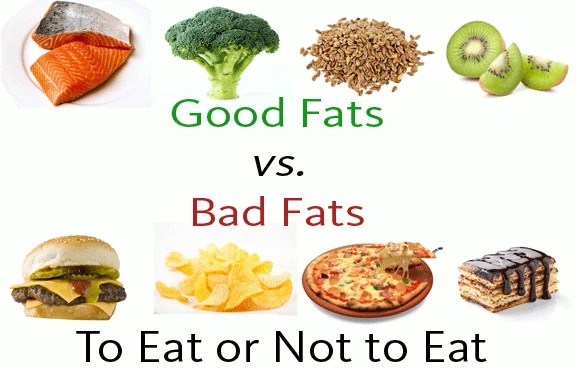burn belly fat fast

It is possible to lose stubborn belly fat, but you may need to go about it in more than one way. On their own, diet alterations or exercise might not be enough. Instead, you have a better chance of burning belly fat successfully by increasing the amount and intensity of your exercise routine; cutting excess sugar from your diet; and ensuring that you get enough sleep at night. Although these changes can target belly fat specifically, they can also help you lose weight overall.
Believe it or not, your body actually doesn't want to store fat. And the secret to lasting weight loss does not come down to complicated calorie-counting and weight-loss gimmicks. Instead, it's about working with your body's natural hunger and sleep rhythms to curb cravings, burn fat and send your energy levels soaring. (In as little as 30 days, you can be a whole lot slimmer, way more energetic, and so much healthier just by following the simple, groundbreaking plan in The Thyroid Cure!)
Prevention's revolutionary Belly Melt Diet explains the science behind why getting a good night's sleep will help you lose while you snooze and how eating the right foods at the right times can satisfy your body's need for fuel and taste. What's more: Certain flat belly foods can actually help you sleep better and help you lose weight on their own. Research shows that our bodies' inner eat-and-sleep clocks have been thrown completely out of whack, thanks to cues we send it all day with the wrong foods—and too much artificial light at night. The result: You're caught in a "fat cycle": a constant flow of hunger hormones that makes your cravings all but impossible to resist. But if you tune into your body's natural eat and sleep schedules, you can actually—finally—say good-bye to your belly. Sounds good, right?
These wholesome foods are built into The Belly Melt Diet meal plans and recipes, but you can also incorporate them into your diet in any way you like. Eat these foods to sleep better, lose more weight, and melt your belly fat. Here's how to get started!
Another day, another study about the benefits of eating fish—and for good reason. We know from animal studies that when your diet is deficient in omega-3s, the natural rhythms of your pineal gland—the pea-size gland in the center of your brain—are thrown off, leading to alterations in the production of melatonin, your sleep hormone. Animals with an omega-3 deficit don't sleep during their usual rest periods—they're up and spinning in their wheels the same way that humans with insomnia do.
A diet rich in omega-3s, on the other hand, can boost heart health, lower your risk of dementia, and improve your moors. As for weight loss, many omega-3 carriers are rich in protein. And study after study confirms: Protein makes you feel full. You even burn more calories digesting protein than you do when you eat fats or carbs. How to get your dose: If you aren't eating plenty of omega-rich foods—think sardines, salmon, halibut, walnuts, flax seeds, and dark leafy greens—you should be! If you aren't getting enough easily, you can take fish- or flax seed-oil supplement.
As if you needed another excuse to eat nuts, these fatty legumes are a great source of mood-boosting magnesium. Without enough magnesium in your body, the part of the brain that regulates melatonin is thrown off, disrupting your sleep. An uptick in magnesium is what tells animals it’s time to hibernate—for us, not having enough of it may play a role in seasonal affective disorder (SAD), the depression—and carb-craving—condition brought on by the low light of winter.
A 2010 study by USDA researchers, published in Magnesium Research, found that magnesium supplementation can help people who have a hard time sleeping to doze peacefully through the night. One group of the 100 tossers and turners over age 51 was given 320 milligrams of magnesium a day, while the other group was given a look-alike placebo. After 7 weeks, those taking the magnesium were sleeping better, and, as a bonus, had lower levels of dangerous inflammation, a rogue reaction by the immune system that is implicated in heart disease, cancer, diabetes, and Alzheimer’s disease.
While the link between calcium and weight loss is still feeble (in some studies it promotes greater weight loss, in others it's a wash), it turns out that milk may really do a body good when it comes to belly fat. A 2010 study by researchers at the University of Alabama at Birmingham found that, among a group of more than 100 premenopausal women, fat was significantly reduced in those who consumed the most calcium-rich foods. In fact, for every 100 milligrams of calcium they consumed per day (that's 1/2 cup of soft-serve frozen yogurt), they lost an inch of intra-abdominal fat—that's the really bad stuff tucked in and around your internal organs that has been linked to higher rates of heart disease and cancer. Like magnesium, calcium can also help you sleep if you tend to be awakened by muscle soreness or cramps—the mineral, along with calcium, helps relax muscle nerves and fibers.
Around bedtime, munch on a few tart Montmorency cherries. These cherries are one of a number of plant-based sources of melatonin, the sleep hormone. (Bananas and corn have it, too.) While there's no evidence that they'll help you nod off, studies have found that foods like these can raise melatonin levels in the body. Not only does melatonin help you sleep, but it's a powerful antioxidant that can protect your cells from free radical damage, the kind that leads to cancer, Alzheimer's, and other diseases. That should help you sleep easy. How to get your dose: Eat them whole! If you're not a fan of cherries, drink the juice instead. In a recent study, people who drank 8 ounces of tart cherry juice in the morning and another 8 ounces in the evening for 2 weeks reported they slept more soundly.
Because of these risks, it’s a good idea to try to control your belly fat. There are three types of belly fat: subcutaneous, intramuscular, and visceral. Visceral fat is the type that sits between your organs and is known as belly fat. Even if you have a normal weight and body mass index (BMI), too much visceral belly fat can still lead to a variety of health problems.
There are many exercises out there, but not all are created equal when it comes to banishing belly fat. However, scientists and doctors alike agree that incorporating physical activity into your daily routine is a great way to burn off unwanted belly fat. Here are some exercises for belly fat that you can try to help you slim down your waistline.
High-intensity interval training (HIIT) and interval training are exercise routines that incorporate short bursts of intense exercise mixed in with lower intensity moves and rest periods. Research shows that HIIT exercises for belly fat help control weight and improve your overall physical condition.
Weight training is also an important component of burning off belly fat. Since muscles burn off more calories than fat does when the body is at rest, having more muscle tone can help you to burn off more fat. Researchers have also found that resistance training, which includes weight training, can increase lean weight while decreasing fat, and it can boost metabolism at the same time.
While it’s important to get at least 30 minutes of moderate exercise a day, you don’t want to overtrain and push yourself too hard. Sometimes when you overtrain, your body can produce too much cortisol. This is a stress hormone that is associated with belly fat, so overtraining may actually make it more difficult to burn off belly fat. Just keep in mind the recommendations for moderate regular exercise, and talk with your doctor if you have questions about how else your exercise routine can benefit your waistline.
'); } else { // If we match both our test Topic Ids and Buisness Ref we want to place the ad in the middle of page 1 if($.inArray(window.s_topic, moveAdTopicIds) > -1 && $.inArray(window.s_business_reference, moveAdBuisRef) > -1){ // The logic below reads count all nodes in page 1. Exclude the footer,ol,ul and table elements. Use the varible // moveAdAfter to know which node to place the Ad container after. window.placeAd = function(pn) { var nodeTags = ['p', 'h3','aside', 'ul'], nodes, target; nodes = $('.article-page:nth-child(' + pn + ')').find(nodeTags.join()).not('p:empty').not('footer '').not('ol ', ul ', table ''); //target = nodes.eq(Math.floor(nodes.length / 2)); target = nodes.eq(moveAdAfter); $('
To really blast fat and calories, try a High Intensity Interval Training (HIIT) workouts. "HIIT workouts are fantastic for burning fat," says Karena Dawn, cofounder of Tone It Up, who recently partnered up with Kohl's. "The mix of cardio and toning increases your heart rate and keeps the burn going after your work out."
Mixing up your routine is key to burning the most fat and calories, says Brad Schoenfeld, a certified strength and conditioning specialist and author of Sculpting Her Body Perfect. Otherwise, your body adapts to the workout and begins to plateau.
Wayne Westcott, Ph.D., coauthor of Get Stronger, Feel Younger, recommends strength training, which he says burns calories even when you're sitting still (like HIIT). Training with light weights or resistance bands three times a week increases your resting metabolic rate and reduces your body fat percentage in about 10 weeks.
Many struggle to find the time to get a workout in — and prioritize other obligations like cooking, cleaning, or work over fitness. The good news: You don't have to exercise for hours to lose weight. "Twenty minutes of HIIT a day is best for fat burning," says Katrina Scott, a cofounder of Tone It Up, who recently partnered up with Kohl's. "During HIIT, you'll increase your heart rate and tap into the glycogen in your muscles. Your metabolism will keep running long after your workout, and the rest of the day you'll continue to burn calories."
It's not always about breaking a sweat. In addition to doing a high intensity workout or strength training a few times a week, walking is one of the best ways to burn fat. "Low intensity walking taps into fat stores and triglycerides in the body, turning it into energy," Scott says.
In the wise words of Dawn: Abs are made with HIIT workouts, but revealed in the kitchen. In fact, Wescott says women lose about 5 pounds of muscle every decade and gain an average of 15 pounds of fat. Protein helps build lean muscle to keep you healthy and strong.
A great way to prevent mindless eating is by preparing healthy snacks, like apple slices, nuts, or hummus. "You shouldn't be fasting for 10 hours a day," Dawn says. "Keep healthy, filling snacks like a protein bar on you in case you get hungry in between meals."
According to Somer, women tend to underestimate their daily intake by about 800 calories. Cutting too few calories can put your body into starvation mode and slows your metabolism, says Kathy McManus, R.D., director of the department of nutrition at Brigham and Women's Hospital in Boston.
According to Healthline, the average woman should eat about 2000 calories per day to maintain her current weight and 1500 calories to lose one pound of weight per week. Apps like MyFitnessPal calculate your daily caloric intake and protein, fat, and carbohydrate goals based on your height, age, and weight.
DOWNLOAD NOW
Dawn and Scott suggest avoiding fad diets and anything that tries to trick your metabolism into doing something. "We are huge advocates for eating meals and eating when you're hungry," Scott says. "If you want a glass of champagne or a piece of pizza, have it. You should never deprive yourself." And if you do have a slip-up, just get back into your routine the next day.
Emotional eating can lead to weight gain and prevent you from losing weight whether you're maintaining a healthy weight, overweight, or obese, according to a recent study published in Journal of Eating Disorders. The study found that physical activity, controlling eating behaviors, and reducing levels of stress can mitigate the effects of emotional eating. Before taking a bite, ask yourself, "Am I really hungry? Or am I just bored or upset?" If you're not sure, have a glass of water and see if you're still hungry after.
Hydration is key for losing weight. According to Scott, chronic dehydration can prevent you from burning more calories throughout the day. Mayo Clinic suggests that women aim for about 11.5 cups (2.7 liters) of fluids a day. Try using a water bottle with marked measurements to keep you drinking water all day long.
To just say you're going to drink 12 cups of water, meal prep, or exercise every day isn't going to help you lose weight unless you consider how these changes will fit into your lifestyle, says Libby Mills, R.D., a lifestyle coach in Philadelphia. Maybe you're a mom with kids and a job, and you just don't have the time to get to a daily workout class. Plan your week out ahead to create a routine that works for you.
An easy way to plan out your nutrition and fitness goals is by keeping a journal. Writing out your schedule, daily food intake, and exercises can help you track your habits and be consistent. Set realistic short-term and long-term goals for yourself — and then celebrate once your hard work pays off (this is a must).
Pair up with a friend who has time to meet for walks, share low-cal recipes, and offer advice when you're tempted to stray. As accountability buddies, you can keep each other motivated to stay on track and encourage one another to meet your goals. Additionally, working out together can increase quality of life, extend your workout time, and reduce levels of stress, according to a recent study published by the American Osteopathic Association.
Has there ever been a time when you felt healthy, happy, and strong? Dig out a photograph of yourself during this time and hang it in your bathroom to keep yourself motivated. You can also print out a photo of someone with a healthy lifestyle who is your fitness inspiration.
30 Days One Dress Size Challenge rewiews




